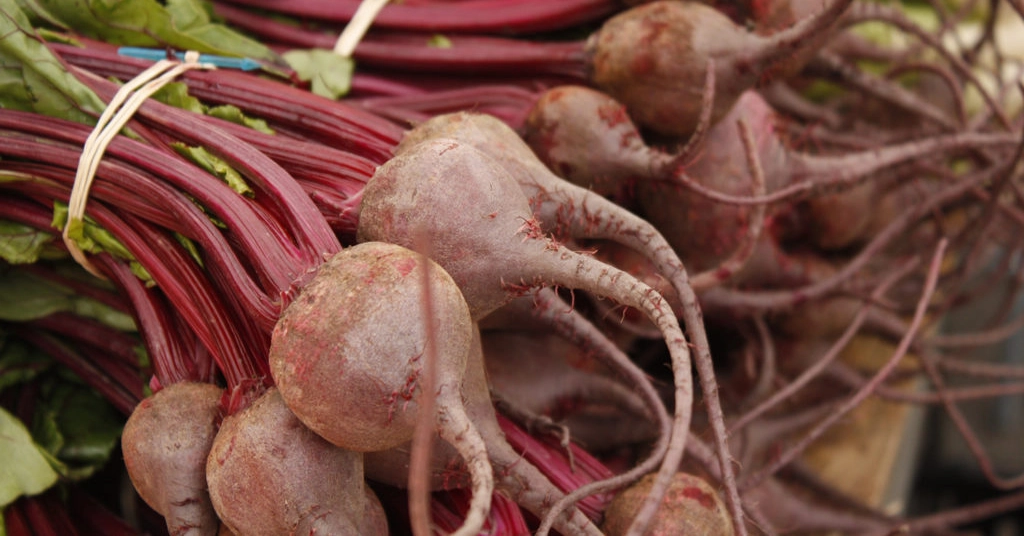Every Saturday from May to October, Kuhlmann’s Greenhouse Garden Market sells produce and flowers at three different farmers’ markets — one in St. Albert, one in the Capilano neighbourhood, and one in downtown Edmonton. “We have a store at the farm where people can come out all winter and buy produce, too,” says Dale Kruk, who works for Kuhlmann’s at the City Market Downtown. Kruk married into the Kuhlmann family 30 years ago and, aside from handling sales at the downtown market, he is also the business’s handyman.
The Kuhlmann family greenhouse has been feeding Edmonton and the surrounding area since 1962. Kruk says eating seasonal fruits and vegetables means eating fresher than if you purchase produce from traditional supermarkets, because the food is grown locally and doesn’t have to endure a long travel time. “A lot of this stuff was picked yesterday or the day before, whereas if you buy it in Safeway, it’s at least a week old — maybe more,” Kruk explains.
In general, eating seasonally means purchasing and consuming fresh foods that are in season in the area where you live. In this way, eating seasonally means eating locally, and supporting the local economy. Gardening, shopping at farmers’ markets, and even going straight to local farms like Kuhlmann’s are great ways to stay seasonal. You can also eat dinner at a restaurant like Solstice, or sign up for local food delivery services, such as the Organic Box.
With seasonal food, transportation costs from farm to vendor are lower and shipment distances are shorter, meaning a smaller environmental impact. Due to shorter transportation times after being harvested, local food also has a chance to fully ripen, which increases its flavour and nutritional profile.
Another benefit of eating seasonally and locally is having the chance to meet your food’s producers.
“You know the person that’s growing it. You can ask them if they sprayed, and what they sprayed if they did, or what they’ve done,” says Kruk. “You can get more information that way.”
Edmonton’s climate is often harsh, particularly in the winter, but local farmers can still grow a variety of foods in the short growing season. “As the year progresses, we plant crops and they grow and it starts with, like, spinach and stuff like that, and then it works in the peas and then carrots and potatoes and squash towards the end of the summer,” says Kruk.
Cucumbers, corn and beans will all grow until the first frost, says Kruk, and almost everything is in season by October, including lettuce, leeks, potatoes and onions. Kruk says Kuhlmann’s begins the market season by selling produce that they’ve kept in storage over the winter, including cabbage, potatoes, carrots, onions, beets, turnips and parsnips.
On the farm, the workload changes over the course of the season. “The field preparation and the planting doesn’t take a whole lot of people, but then when the crops are ready for weeding, we have probably about 30 people that weed. And as the stuff gets ready, the weeders will become the pickers, because everything’s done by hand,” says Kruk. “It’s quite labour-intensive.”
Kruk says that market season is his favourite time of year. “It’s just fun being here,” he explains. “You meet lots of people.”





0 Comments